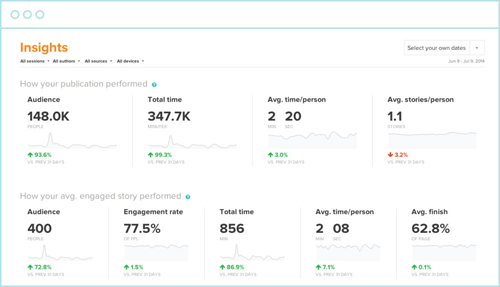Content Marketing Toolbox

From infographics and videos to webinars and whitepapers, marketers continue to create and distribute content at a rapid clip. In fact, the majority of businesses are not only increasing the amount of content they create, but they are also allotting more space in their budgets for content marketing (a marketing approach focused on creating and distributing content to drive profitable customer action).
Still, many enterprises are struggling to keep up with the content craze. Business-to-business marketers, for example, indicate that producing engaging content, producing content consistently and measuring content effectiveness are the top three challenges they face with regard to content marketing (PDF).
Luckily, the Web is full of tools that can help every enterprise more easily create, distribute and measure content marketing - and more than a dozen are featured in this year's Content Marketing Toolbox.
Create
Brands with less team members produce less content - pretty self-explanatory - but thanks to myriad content creation tools available - that are often free - smaller companies can increase the number of tactics they use to better their chances of brand awareness, lead generation and customer engagement.

Infographics
Infographics remain one of the most used forms of content marketing. They typically provide key takeaways that are presented in an easy-to-scan way. Since Web users often skim through content, infographics provide a great opportunity for brands to get their message across before a reader abandons the page (e.g. an email service provider would include stats confirming email is the best way to reach customers/prospects). Infographics can, however, be challenging to create for those not in the design field. Here are a few infographic builders that can help the design-challenged.
Piktochart
With a free lifetime account (no credit card required), Piktochart is a popular infographic builder - not only because there is no cost associated with the service (unless a user upgrades to a Pro account), but also because of its easy-to-use features. Piktochart provides infographic templates, so users can simply plug in their title, copy and data. Like shown in the screenshot below, marketers can use simple drag-and-drop options to add graphic elements (e.g. images, videos, charts, etc.) or upload their own to their "canvas" (or infographic draft). Once users have found the graphics and icons they want to use, they simply move it to their canvas.
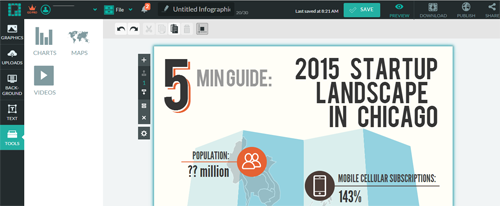
Using Piktochart, marketers can also create banners, presentations and reports, as well as share their creations to social networks directly from the online platform.
infogram
With the ability to create interactive and fully responsive (looks good on every device accessing it) infographics, infogr.am is worth checking out. The basic (and free) version of infogr.am allots more than 30 chart types with easy data editing and the ability to share online, but infogr.am's $18 monthly plan lets users download their creations as well as update them in real-time (see image below). By using a Google Drive spreadsheet, for example, marketers can connect live data sources to Infogram's infographics, charts and visualizations. If a designer, for instance, did create the infographic, marketers wouldn't need the designer to update it, as marketers can do so within their Google spreadsheet.
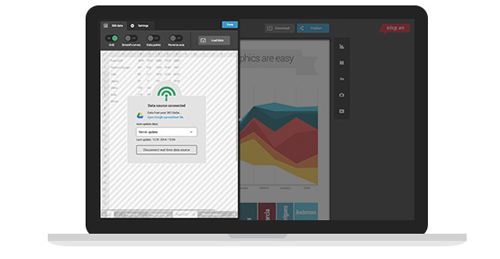
easelly
One million infographics have been created on easelly and there's good reason for it. Marketers can simply click on an infographic template to get started and then customize backgrounds, shapes, text, charts, etc. Even better, easelly does not require a premium account for users to download the infographic as a PDF or get the embed code (to share on a website).
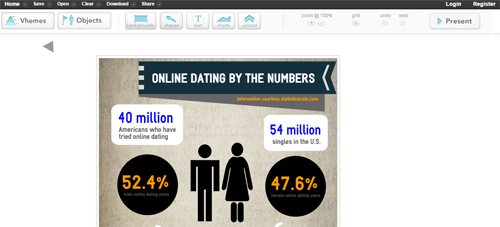
Venngage
Like many of the other infographic builders mentioned here, Venngage offers both free and premium plans. Those using the free plan have access to limited themes and templates, charts and icons. For $19 month, users will receive brand-free infographics (doesn't have Venngage's log on them), premium themes and templates and premium charts and icons. Venngage is simple to use and provides many filtering features to ensure users, for example, get the perfect chart, map or icon to fit their needs.

Timelines
Timelines are a popular form of content, because marketers can show how they got from point A (like when their site launched, for example) to point B (like celebrating a 10th anniversary or some other big milestone).
Dipity
A free digital timeline website, Dipity, enables users to create, share, embed and collaborate on interactive, visually engaging timelines that integrate video, audio, images, text, links, social media, location and timestamps. For about $5 month, brands can create custom branding and backgrounds, ensure their timelines are ad free, get stats and more.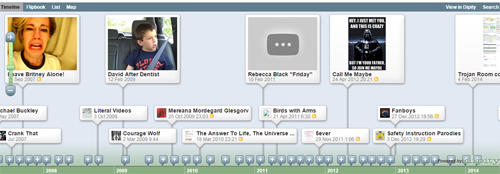
teAchnology
Those in need of a no-frills timeline generator can use teAchnology's to enter event dates and event name/descriptions.

Videos
In just two short years, video is expected to account for nearly three-quarters (74 percent) of all Internet traffic but not all marketers are making video a priority. There's good reason for it. Videos can be intimidating and costly to make. Here are a few tools to make creating videos easier for the wallet and the marketer.
An online marketplace for original visual content, Visually pairs brands with the professionals that can get a video project done on-time and on-budget (Visually projects include an agreed-upon project time and flat pricing). The pricing depends on the complexity of the video, of course, but is often less costly than going to an agency with a brand's video needs. A motion graphics video, for example, costs around $6K at Visually, whereas an agency may cost $15K and up. Here's an example of a video created with Visually.

While videos created on this marketplace won't be nearly as polished and professional as those created on Visually, Fiverr offers the opportunity to have someone create (or edit) video and animation for a business, including commercials, stop motion, testimonials and reviews by actors, animation and 3D. Those not yet familiar with Fiverr should know that all services offered on Fiverr cost just $5. Most of the time users get what they pay for, but brands may be surprised by the amount of talent that exists on the marketplace, like this guy who will create a fully custom whiteboard video for just five bucks.
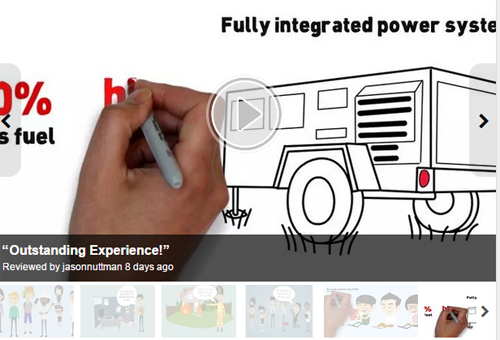
For about $10-$30 monthly, small businesses can create professional-quality videos with Animoto. The company states that marketers can create their first video within minutes (no video-editing experience required) and simply add pictures, text and/or video clips. Animoto supplies the music. Then, brands can easily post and track their videos on the Web, on social, in email or download the videos to DVD. Check out their examples for e-commerce, service providers, etc., here.

Whitepapers
Very popular in the business-to-business world, whitepapers are essentially in-depth research papers that demonstrate a problem and provide a solution. The company conducting the research is most often part of the solution. Even with an agenda, whitepapers typically provide a good read, as they are informative and more comprehensive than most blog posts would allow.
What's more, most professionals know that they will be required to fill out a form to download the content, which gives marketers access to a user's name, email address and other demographics. Since there is a lot of information to present, however, the design of a whitepaper often dictates its success.
Kapost
B2B service providers have a stake in helping their clients succeed, so many offer free templates for email, ebooks (like this one from HubSpot) whitepapers, social posts, presentations (like this one from HubSpot), infographics (like this one from HubSpot) and more. One of the best (read: easiest to customize) whitepaper templates Website Magazine editors came across is from Kapost.
Even its creators will tell users, "It isn't fancy" but this downloadable (.docx) file from Kapost is easy to use and will make the process of creating a whitepaper "a snap."
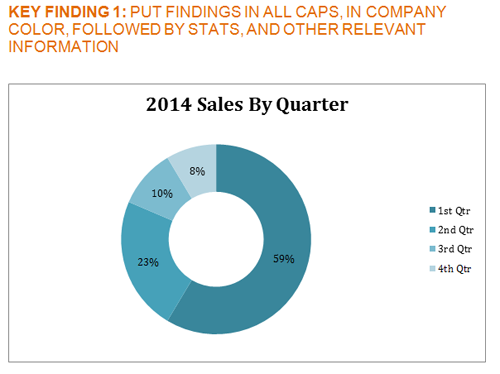
Articles
There are plenty of outsourcing opportunities for those who feel they don't have the time or even the money (as outsourcing tends to be cheaper) to create articles in-house (goDot, iWriter, Upwork and Fiverr are all popular choices), but there are also many tools that can help companies quickly create articles in-house either through curation or old-fashioned inspiration.
Trapit!
A super sophisticated (yet easy to use) content curation tool, Trapit enables users to set "traps" (or the kinds of content they'd like to curate on their digital properties) by typing in a keyword or pointing to a URL. Trapit will then quickly deliver content that's relevant, so it's like brands have 100,000 writers at their disposal. The traps are updated constantly with fresh content, so they're always up-to-date. Even though this curates content from around the Web, the headlines and summaries are fully customizable, and brands can add additional commentary to infuse Trapit's content with their unique voice. Plus Trapit learns about the user over time, because brands can indicate (with a thumbs-up sign) the content they like or dislike (thumbs down) so that content results are better suited to them and their audience in the future.
What's more, Trapit is an all-in-one-system, because content can be scheduled from within the platform to anywhere (blog, mobile app, etc.) and then can be analyzed through Trapit's integration with Google Analytics. Those who are interested in Trapit will, however, have to contact the company for pricing.
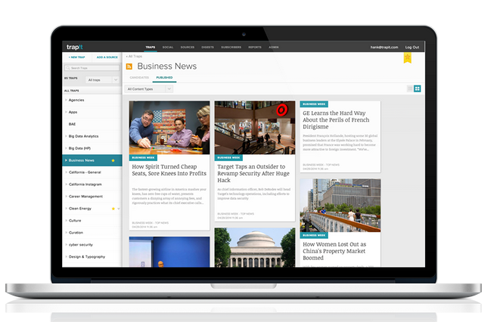
Quora
A free question-and-answer site, Quora can be used to generate ideas for a blog post (or even the previously mentioned whitepapers, infographics, videos, etc.), because real users are asking real questions that need real answers. The questions poised here can be modified to create an excellent, relevant and likely highly shareable article because if one person has a question, more often than not, more people have that same question. For example, this question, "What are the best articles about Tinder's card-swiping UI?" would make great inspiration for an article like, "The User Interfaces Behind Today's Most Popular Apps" or "A Closer Look at Tinder's Card-Swiping UI."

Distribute
The fastest way to getting a return on investment (ROI) from content marketing initiatives is to distribute said content to the most targeted audience possible. This is because it's not enough to distribute content to the masses, the audience must respond in a positive way - buy, sign up, subscribe, etc. There are some pretty sophisticated content marketing tools that empower marketers to know who they are distributing their content to before they hit send, post or publish.
Social
Current or prospective customers who already like or follow a brand on Facebook, Twitter, Instagram, LinkedIn or Google Plus are the perfect candidates to market content to. After all, they hit like, follow, etc. because they want to hear from that brand. There are plenty of tools that exist, however, that can extend a company's reach outside of those ready-to-market-to groups.
Pagemodo
Image-based content has been proven to increase engagement on social media networks, and when users interact with content on social, a brand benefits from the increased reach (friends will often see what their friends have liked, commented on, retweeted, etc.). Pagemodo is a Web-based service (offering both free and paid plans) that allows users to very easily create image-based social media posts. Users can either upload their own images to customize the posts created within Pagemodo or use the hundreds of photos Pagemodo has at the ready. Brands can either use Pagemodo to engage an audience on social (like a Happy Fourth of July post, for example) or to share content - either way, they'll benefit from using a post designer because it's image-based.

uprise.io
Uprise.io is a tool for content marketers to discover and analyze the top performing content within their vertical, see which social network is responding best to content and view influencers and sharers across verticals, publishers or specific articles. The ability to build lists of pre-categorized influencers and sharers as well as personalizing the dashboard, makes each time a user logs in more valuable than the last, according to its Co-Founder Lee Fuller. The screenshot below shows some of the top sharers in the baking category, but there are 24 other categories (and counting).
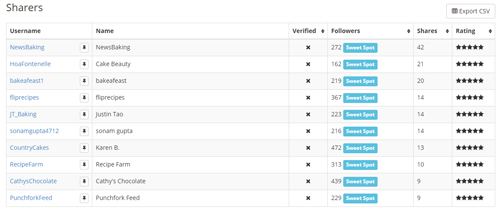
Content Discovery
Along with search and social ads, content discovery tools are effective ways at paying to get content in front of relevant audiences.
Outbrain
Companies looking to get their articles, whitepapers or even earned media on publisher sites like CNN.com or ESPN.com should consider Outbrain. With Outbrain, content will appear as Promoted Stories and look similar to the editorial content on the site (a type of native advertising).
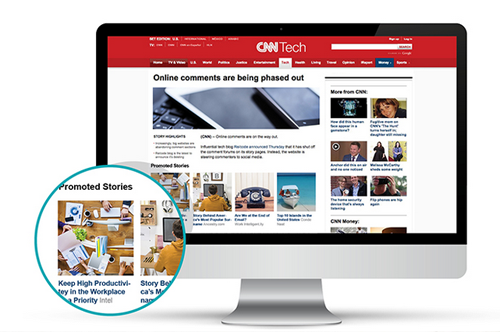
Measure
Proving ROI is difficult for most creatively driven initiatives (as design and editorial departments tend to be cost centers, rather than profit centers), but the industry has really stepped up to ensure marketers can be informed as to what is or is not working.
DNN
Most content creation, distribution and measurement begins and ends in a content management system, so brands would be wise to invest in one that not only lets them publish content to any online channel, but also lets marketers and content writers quickly see how their content is performing on both a page level and the site as a whole. Recently released, DNN's Evoq 8 does all of that and more. Its content analytics dashboard is accessible from each individual page, and includes metrics like page views, traffic sources, and time spent on page. This is important because marketers and content producers don't have to leave Evoq to access a separate analytics solution, which not all content creators may have access to.
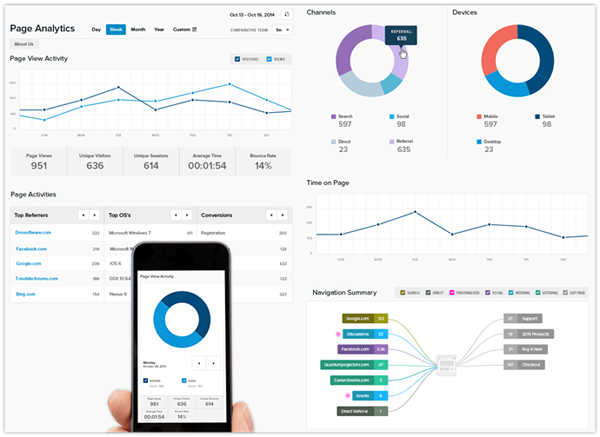
InboundWriter
Those not in the market for a new content management system (although there are some enviable ones, like DNN, Sitecore, etc.), should check out InboundWriter. Covered extensively at Website Magazine, InboundWriter keeps improving its offering to save marketers time and money when it comes to content creation. It uses predictive analytics to calculate ROI before a marketer even begins writing (and even provides alternative topics that have the highest chance of success). When it comes to measuring ROI after the fact, brands can see how the posts they created at InboundWriter's suggestion performed (total page views, etc.). InboundWriter may actually help some companies reduce the number of content pieces they need to create each day/week/month, because it's smarter content that drives more traffic than content that is created blindly.

Contently
Contently Insights is an analytics suite designed by and for brand publishers, and is built to tell publishers how their content is actually affecting their brands' bottom line. By gathering insights that go beyond pageviews, shares and likes, brands can improve their content over time.
Along with its analytics offering, Contently helps brands create content with its software, talent, and technology that ties content performance to business goals.
